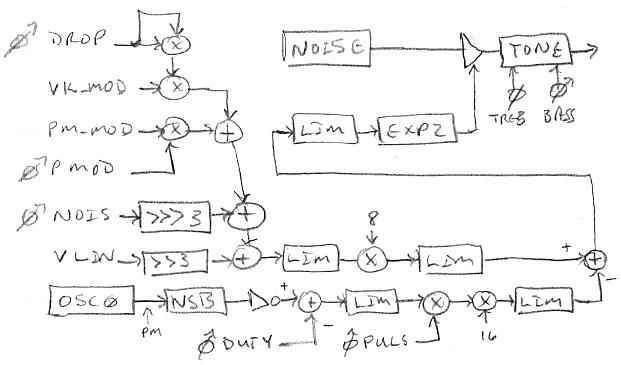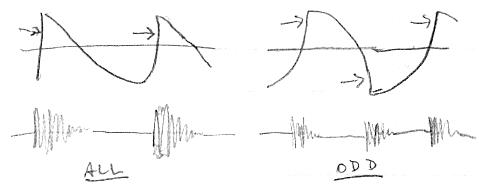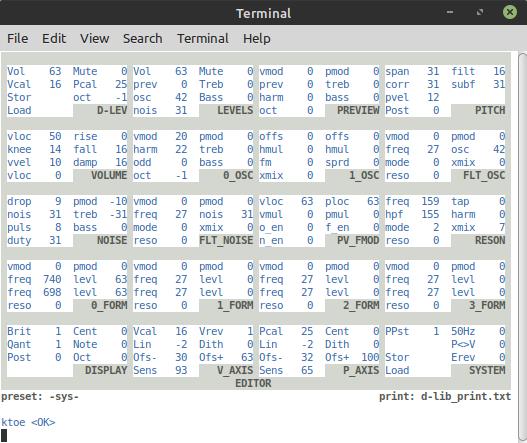Noise Modulation II
Much of this week was consumed with volunteering, but I managed to squeeze in some programming & experimenting time here and there. When you change anything in the synth you have to try it out for a while, and if it seems like a keeper (or at least a better / closer) you usually have to go back and tweak the presets, and in doing so one gains further experience with the new normal. With the noise scheme described in my previous post, I found myself fighting the "sizzle" sound of the very narrow pulse window, and wondered if P/V modulating the level of the window might be better, and realized this might easily integrate into the "drop" feature (where the noise level post knee is variable) when the pulse strength was set to zero. Alas, I found myself fighting this arrangement too. But in this whole process I noticed that the P/V modulation of the phase modulation signal itself (via P/V modulation of the oscillator "harm" value) was providing some pulse width control, and in a natural sounding kind of way that I didn't need to further axis modulate nor overly fight with in order to get it to blend in with the oscillator. Here is this new scheme:

The only thing that changed here is the very bottom path. Here is what is going on in that path in terms of processing:

Again, we take the PM signal from oscillator 0 and flip the most significant bit to go from signed to unsigned. Then we invert all the bits to flip it, which puts the peak on the x axis (the x axis is point about which all multiplications "hinge"). Next we subtract the "duty" knob from it to move it down, then limit it to chop off the negative portion. The result is multiplied by the "puls" knob value, which attenuates it as this is a fractional unsigned multiply. Finally we multiply by 16 and limit again to chop off the overflow. This signal is subtracted from the linear noise level, limited to remove negative values, exponentiated, with the result used to control the noise level. The noise spectrum is then shaped via bass and treble tone controls, as well as a general 2nd / 4th order multi-mode state variable filter that follows (not shown).
Here's a very short demo of the new noise with the humming preset: [MP3]. I've got the noise turned up a bit more than normal to emphasize it. The noise here is simulating nasal radiation.
It does a steam train pretty good too: [MP3].




